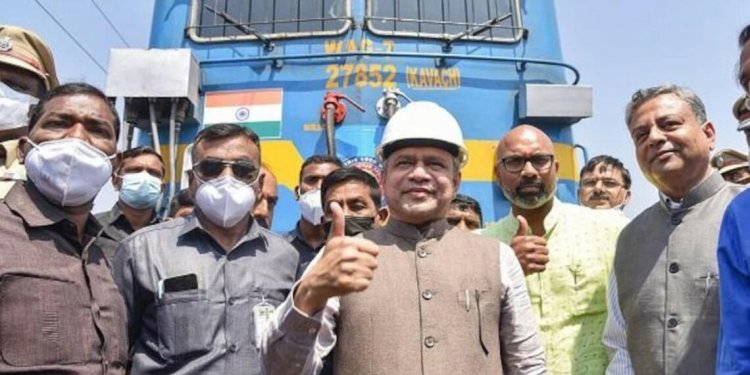Indian Railways’ big move to make trains “collision-free”
According to various reports, more than 13,000 train accidents across the country have claimed the lives of around 12,000 railway passengers in 2020. As per the latest statistics, 32 people on average have lost their lives per day in these accidents in 2020. Aren’t the numbers disturbing? Of course, Yes. However, only mourning without working […] The post Indian Railways’ big move to make trains “collision-free” appeared first on TFIPOST.

According to various reports, more than 13,000 train accidents across the country have claimed the lives of around 12,000 railway passengers in 2020. As per the latest statistics, 32 people on average have lost their lives per day in these accidents in 2020.
Aren’t the numbers disturbing? Of course, Yes.
However, only mourning without working towards finding a credible solution to curb this menace won’t bring any change. The government seemingly is aware of the same and is leaving no stone unturned to ensure the safety of those travelling via rail.
Government to make “collision-free” trains
In what can be seen as an appreciable move by the Indian Government, Railway Ministry has stepped in to launch an indigenous anti-collision system.
Earlier, when the two trains used to collide, it would have claimed multiple lives. But, with changing times, things aren’t the same anymore. You’ll be surprised to know that on Friday, two trains on the same track hurtled towards each other at top speed. But they didn’t collide, thanks to Kavach.
Kavach is an Automatic Train Protection (ATP) system indigenously developed by the Indian Railways. It has been built keeping in mind to ensure zero accidents. On Friday, it passed through a crucial anti-collision test, under the supervision of Union Minister for Railways Ashwini Vaishnaw, the driver of the train and other officials who were present for the trial –
SPAD test, tried crossing signal at red. Kavach is protecting and not allowing the Loco to move.#BharatKaKavach pic.twitter.com/x6Ys9iz9xJ
— Ashwini Vaishnaw (@AshwiniVaishnaw) March 4, 2022
Kavach is a set of electronic devices, GPS and RFIDs tags present in signalling systems and tracks. The devices connect with each other through high radio frequencies, and the programmed system performs without any specific requirement of human intervention.
According to a report from India Today,
“The locomotives with Kavach will automatically stop if the system detects any manual error by the pilot or any other malfunction such as inadvertently jumping the red signal. The system is designed in a manner to ensure that it brings the train to a halt automatically if Kavach notices another train on the same track.”
Kavach to shield the locomotives
As per the official statement released by Indian Railways, Kavach “works on the principle of continuous update of movement by using high-frequency radio communication. It also conforms to SIL-4 (Safety Integrity Level – 4) which is the highest level of safety certification.”
It further added, “RFID tags are provided on the tracks and at station yard for each track and signals for track identification, location of trains and identification of train direction. The ‘On Board Display of Signal Aspect’ (OBDSA) is to help loco pilots check signals on board consoles even when the visibility is low.”
Notably, it was announced in the 2022 union Budget that 2,000 km of the rail network is expected to be brought under the Kavach for safety and capacity augmentation in 2022-23. As of now, Kavach has been deployed on over 1098 route km and 65 locos in ongoing projects of South-Central Railway and has been approved for speeds up to 160 kmph. Kavach is all set to rightfully emerge as the shield for Indian railways and travellers. The government needs to be applauded for the exemplary move.







